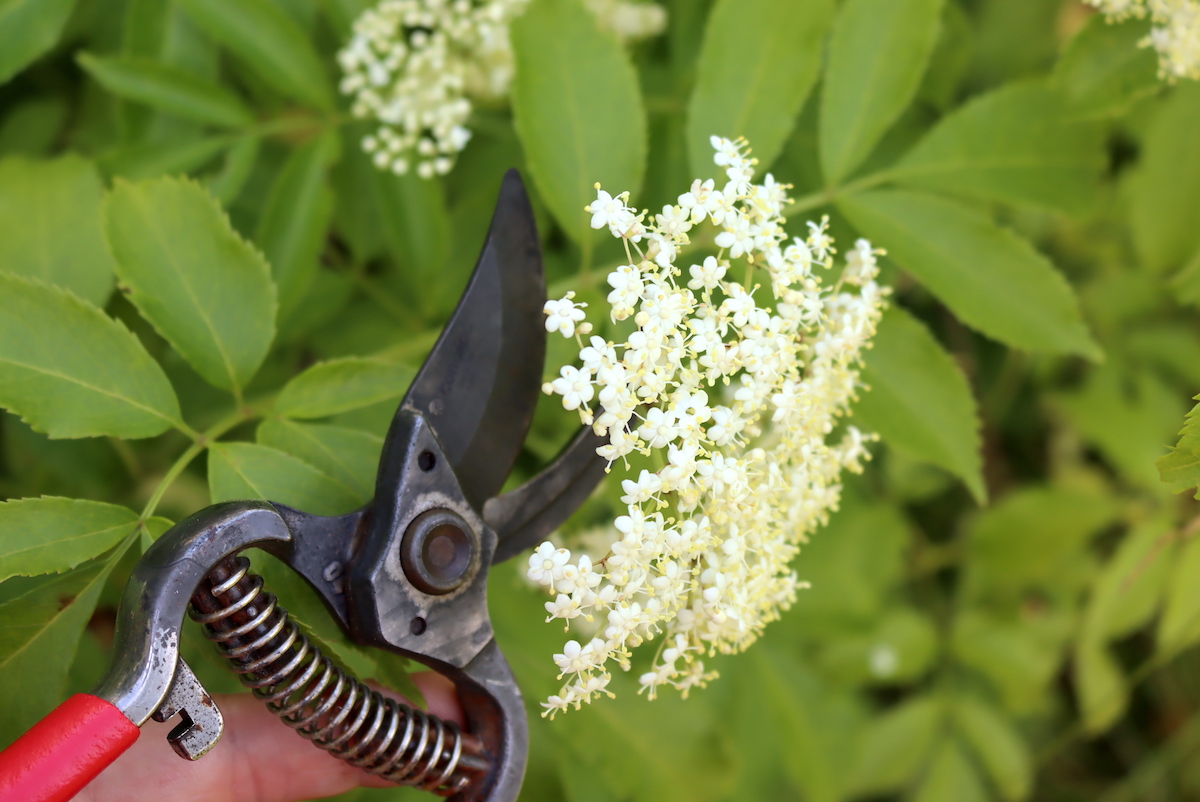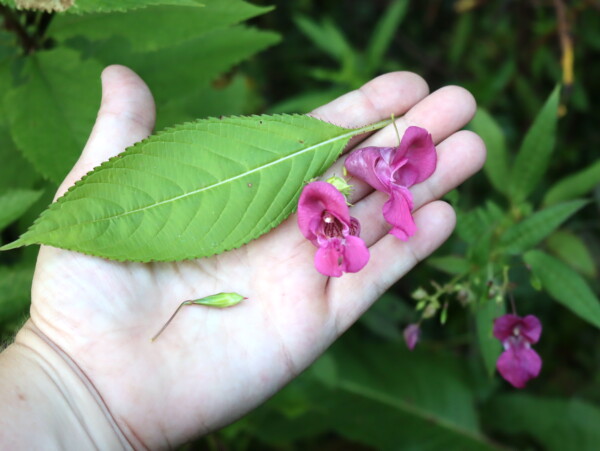Affiliate disclosure: This post may contain affiliate links. Please see our Privacy Policy.
Elderflower infused vinegar is a lovely way to use elderflowers, and preserve their delicate flavor for year round use.

Our permaculture homestead is covered with all manner of unique cold hardy fruits, and while most are beautiful and tasty, only a few have edible flowers that you can harvest early in the season.
Growing elderberries means not only an elderberry harvest later in the season, which is perfect for elderberry wine and elderberry syrup, but also a big harvest of fragrant elderflowers.

We’re always looking for new ways to use elderflowers, and I make them into elderflower jelly, mead and tincture each year.
This particular recipe is for a simple elderflower infused vinegar, and it comes from Pascal Baudar’s new book, Wildcrafted Vinegars.

The following excerpt is from Pascal Baudar’s book Wildcrafted Vinegars: Making and Using Acetic Acid Ferments for Quick Pickles, Hot Sauces, Soups, Salad Dressings, Pastes, Mustards, and More (Chelsea Green Publishing, Oct 2022) and is reprinted with permission from the publisher. It has been edited slightly for format and length to fit the web.
Making Elderflower Vinegar
Elderflower vinegar is so delicious and yet so easy to make.
Each year I make a batch of this vinegar with elderflowers from local Mexican elder (Sambucus mexicana), which I think are a bit milder than black elder (S. nigra) with their own flavor accents. This is a classic recipe in Europe and particularly England.
When foraging elderflowers, you want them full of pollen. The newly opened flowers are best. Collect them in the morning on a sunny day and place them into a paper bag.

It’s common to have a lot of tiny flies present on the flowers. My method of getting rid of them is to place the flowers in a bowl outside for an hour or so. Most of the little critters will vacate.
Another technique is to gently shake the flowers. Don’t run the flowers under water, as you’ll wash off the pollen and much of the flavors.

Elderflower Vinegar
Ingredients
For a 1-pint jar (480 ml)
- Around 10 elderflower heads from Mexican elder, or 4 to 5 elderflower heads from black elder
- 2 to 3 tablespoons 30 to 45 ml maple syrup (optional at this stage—you can season the vinegar later, too)
- 1 3/4 cups 420 ml apple cider vinegar (raw or pasteurized)*
Instructions
- Use the flowers as soon as possible after harvesting. To remove them from the stalk and small stems, rub gently with your thumb and forefinger in a downward motion over a bowl. They should drop without much effort. It’s harder to do if you wait too long and the flower heads are slightly wilted.The size of the flowers will vary based on the type of elder tree, but the idea is to pack them very loosely into the pint jar.
- Add the maple syrup and vinegar, then close the lid.
- Shake the jar gently so the syrup and vinegar mix well. You want the jar to be quite full—you can add more vinegar if necessary.
- Let stand for 2 to 3 weeks in a cool, dark place.
- Strain the vinegar and discard the flowers.
- Transfer the vinegar into a clean bottle or glass container.
- Cap tightly and store in the refrigerator or a cool, dark place (below 65°F/18°C).
- Shelf life for optimum flavors is around 6 months, or up to a year in perfect storage conditions.
Notes
About the Author
Pascal Baudar is the author of three previous books: Wildcrafted Fermentation (2020), The Wildcrafting Brewer (2018), and The New Wildcrafted Cuisine (2016). A self-described “culinary alchemist” he leads classes in traditional food preservation techniques.
Through his business, Urban Outdoor Skills, he has introduced thousands of home cooks, celebrity chefs, and foodies to the flavors offered by their wild landscapes. In 2014, Baudar was named one of the most influential local tastemakers by Los Angeles Magazine.

Elderflower Recipes
Looking for more ways to used elderflowers?
- 60+ Elderflower Recipes
- Elderflower Honey Muffins
- Elderflower Marshmallows
- Strawberry Elderflower Popsicles




